About the project
We were delighted to win the contract to plant up the first phase of the exciting Royal Docks Corridor.
The Royal Docks Rain Garden project is an integral part of a larger initiative led by Newham Council in collaboration with the Royal Docks Team - a joint effort from the Mayor of London and the Mayor of Newham. This ambitious undertaking is focused on revamping the road layout and street environment along the Royal Docks Corridor, which encompasses Silvertown Way and the section of North Woolwich Road leading up to Connaught Bridge.
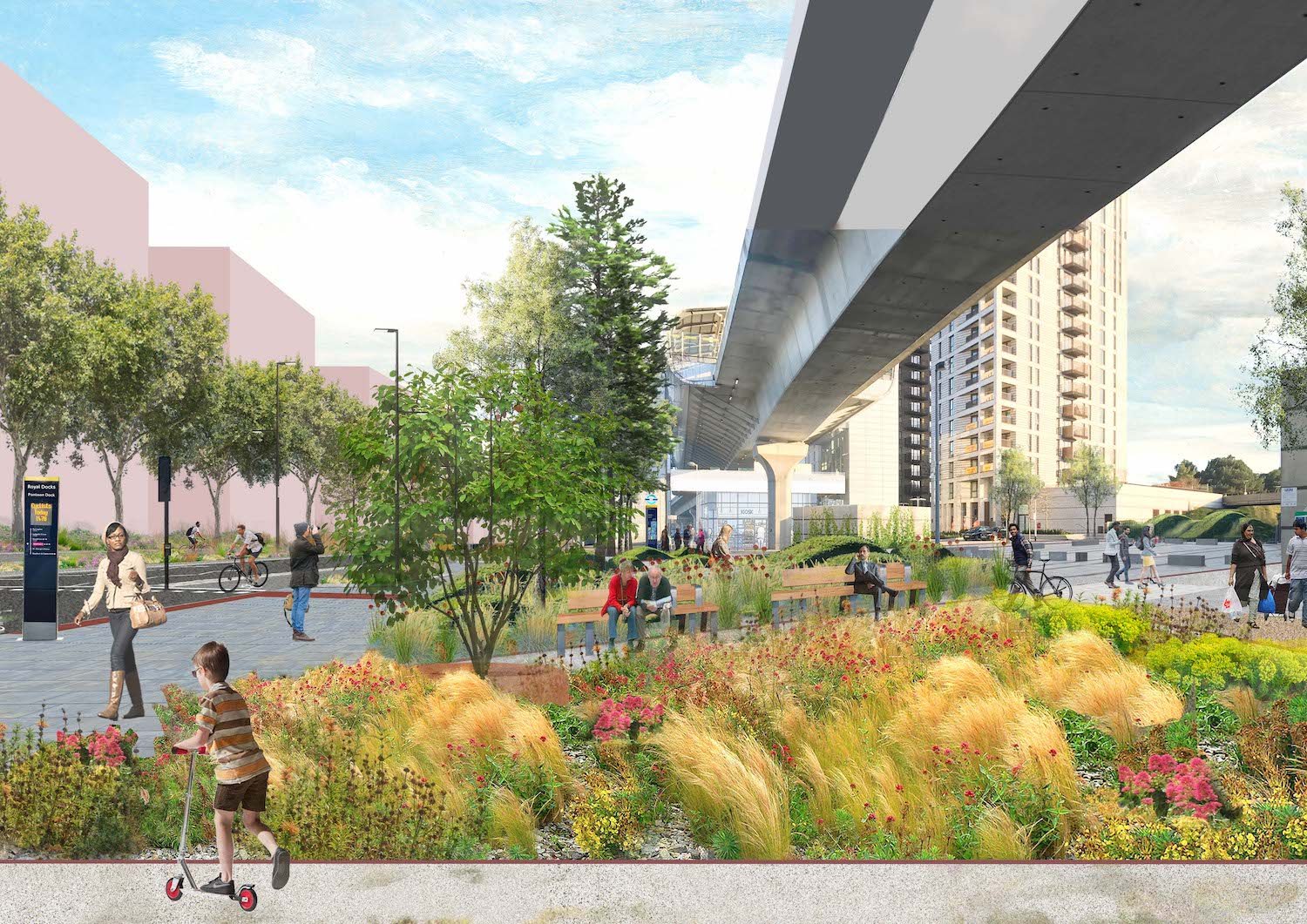
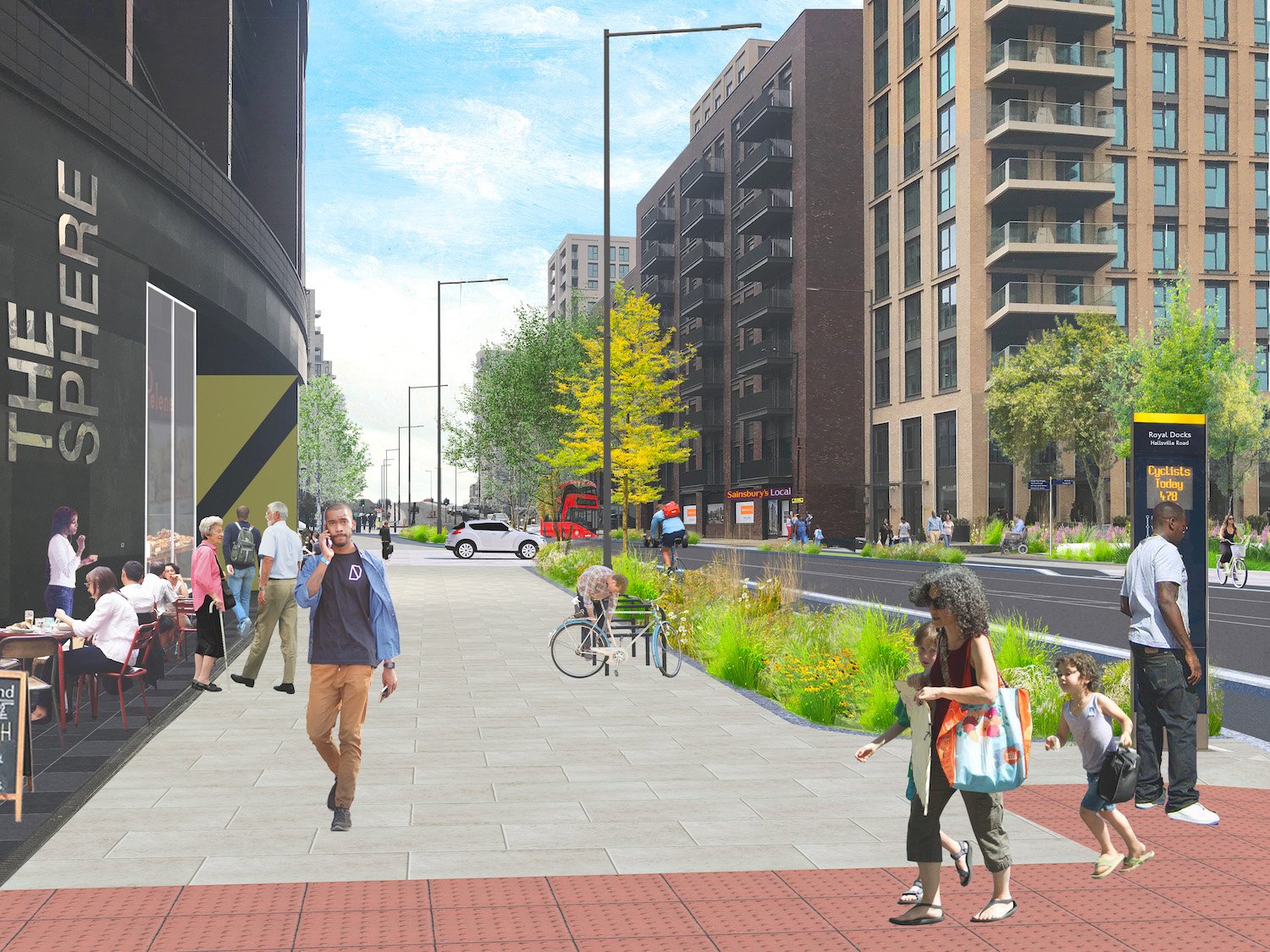

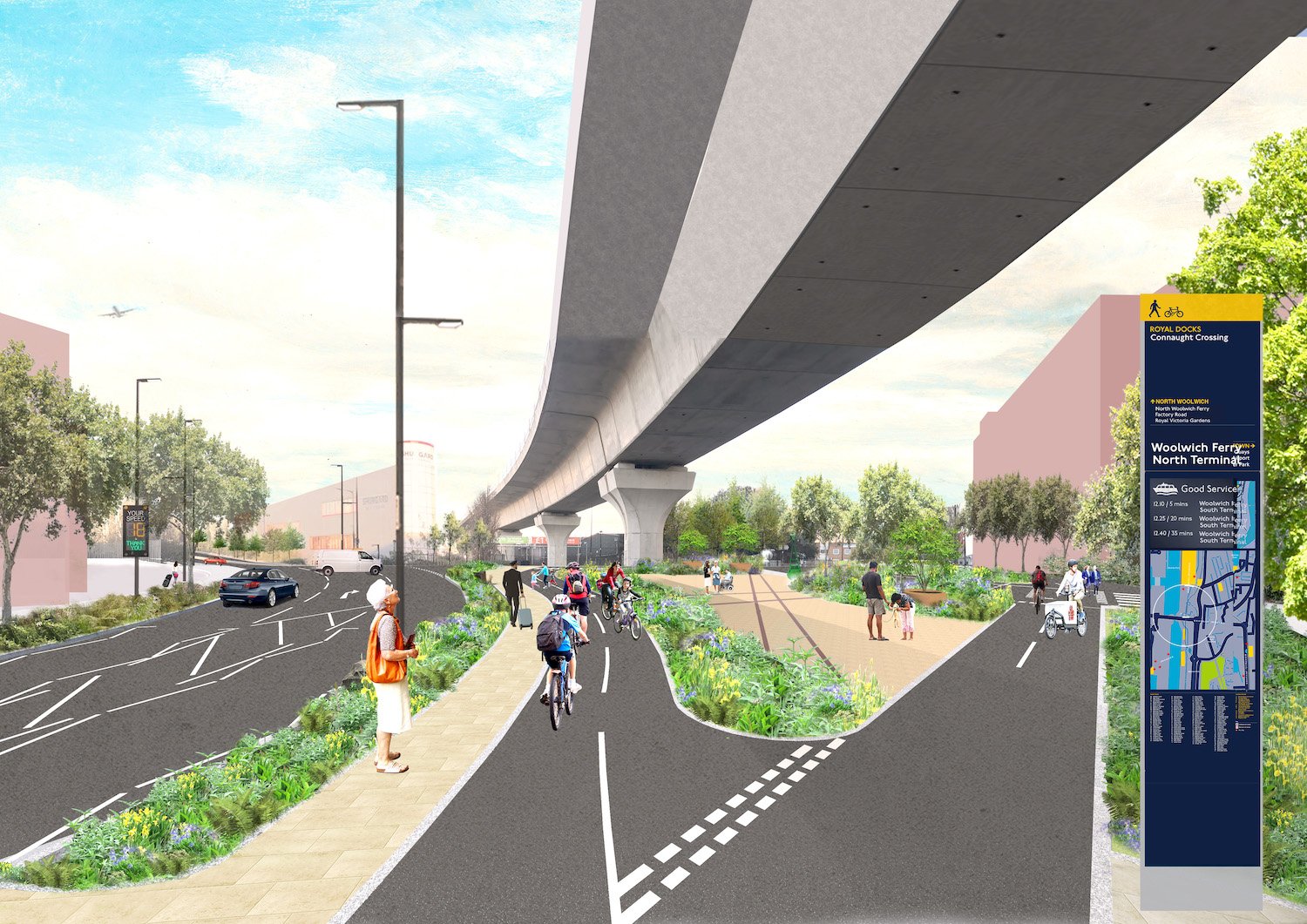
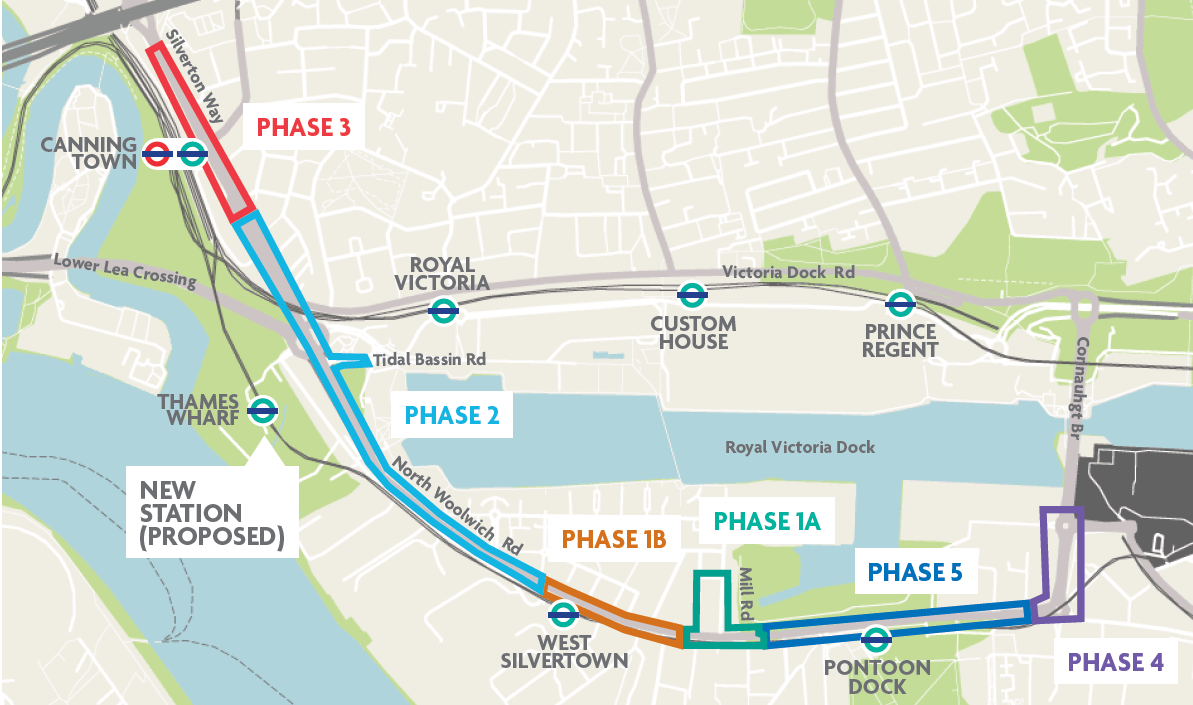
The Royal Docks Corridor project is designed to usher in a significant uplift in the area's overall quality of life. It encompasses a multitude of objectives and enhancements that promise to create a vibrant and sustainable urban environment:
1. Public Spaces and Wider Pavements: The project seeks to create new public spaces and wider pavements, promoting community engagement and social interaction.
2. Separated Cycle Lanes: With a focus on sustainable and active transportation, the inclusion of separated cycle lanes encourages cycling as a viable mode of commuting.
3. Improved Crossings and Connections: Better crossings and connections to local destinations will make navigation safer and more convenient for pedestrians.
4. Increased Greenery and Planting: The infusion of greenery and planting aligns with the broader urban greening initiative, fostering a healthier and more environmentally friendly atmosphere.
5. Air Quality Improvement: A core objective of the project is to improve air quality, reducing pollution levels for the benefit of residents and visitors alike.
6. Traffic Calming: By slowing down vehicle speeds and reducing the dominance of traffic, the project aims to create a more pedestrian-friendly and safer environment.
7. DLR Station Access: Enhancements in access and connections to Docklands Light Railway (DLR) stations are intended to facilitate seamless public transportation.
8. Smooth Bus Services: Ensuring the smooth operation and punctuality of bus services is vital to the project's overall success.
9. Sense of Place: The creation of a 'sense of place' is a key component, intending to make the streets more attractive and inviting for people to spend time in.
The Role of Rain Gardens
A standout feature of this project is the incorporation of Rain Gardens as part of the Sustainable Drainage System (SuDS) plan. Rain gardens are a powerful tool in urban greening and flood management. These Rain Gardens play a pivotal role in mitigating flooding caused by surface water runoff and in purifying water as it percolates through the soil.
Over 50 varieties of trees, shrubs and plants were used in this phase which included 8 six-metre trees planted across both sides of the road, the planting was chosen for its hardiness in an exposed location and took into account the shadier areas under the DLR. This added instant aesthetic impact to the area between Pontoon Dock and West Silver Town DLR stations.
In the initial phase alone, an astonishing 5,000 plants were planted. As these plants establish and bloom, they promise to further enhance the area's visual appeal while also serving as a vital food source for pollinators, thereby contributing to biodiversity.
The overall scheme forms the largest rain garden in the UK to date and will be implemented across 5 phases with the planned completion to be in October 2025.

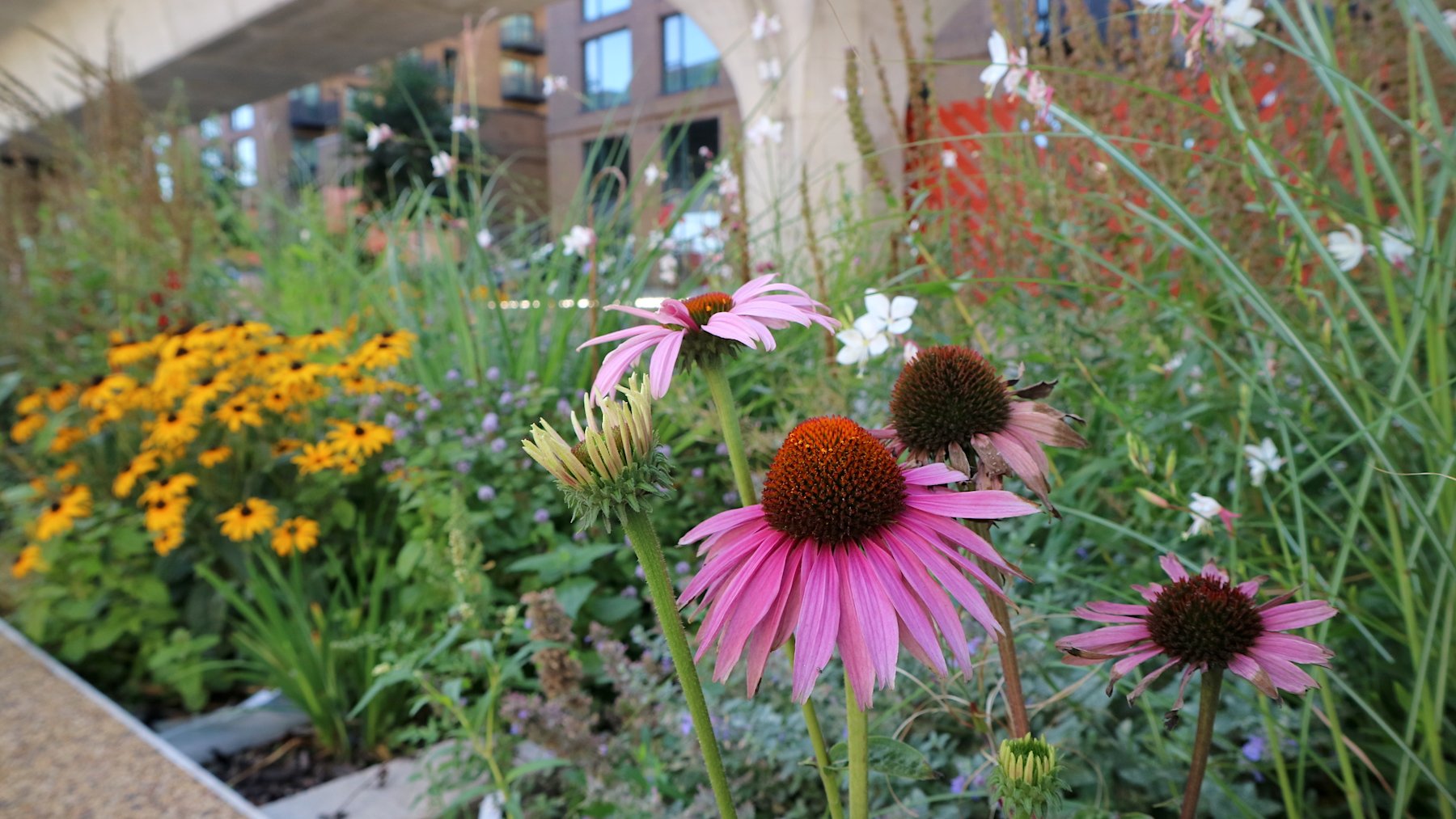

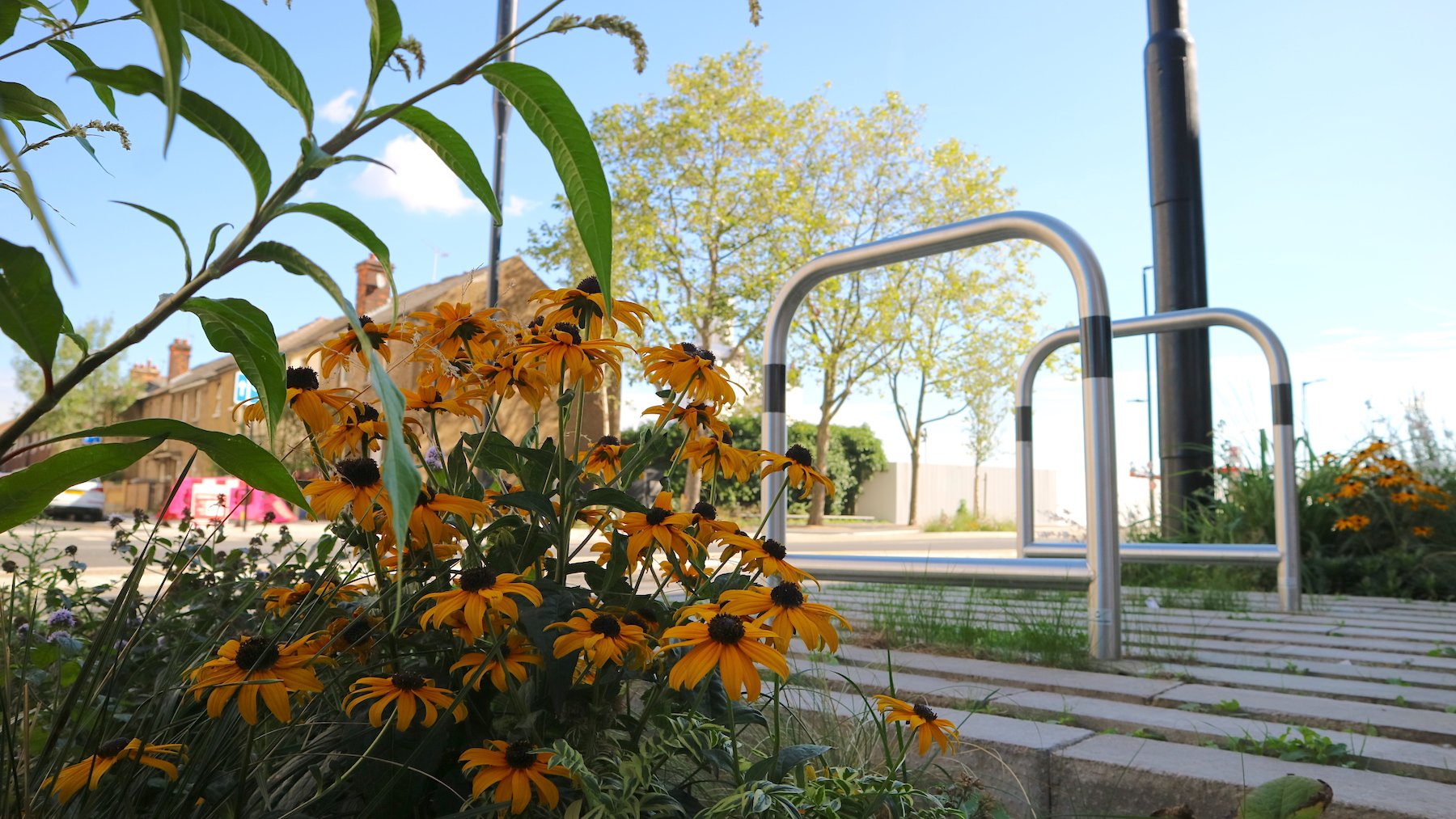
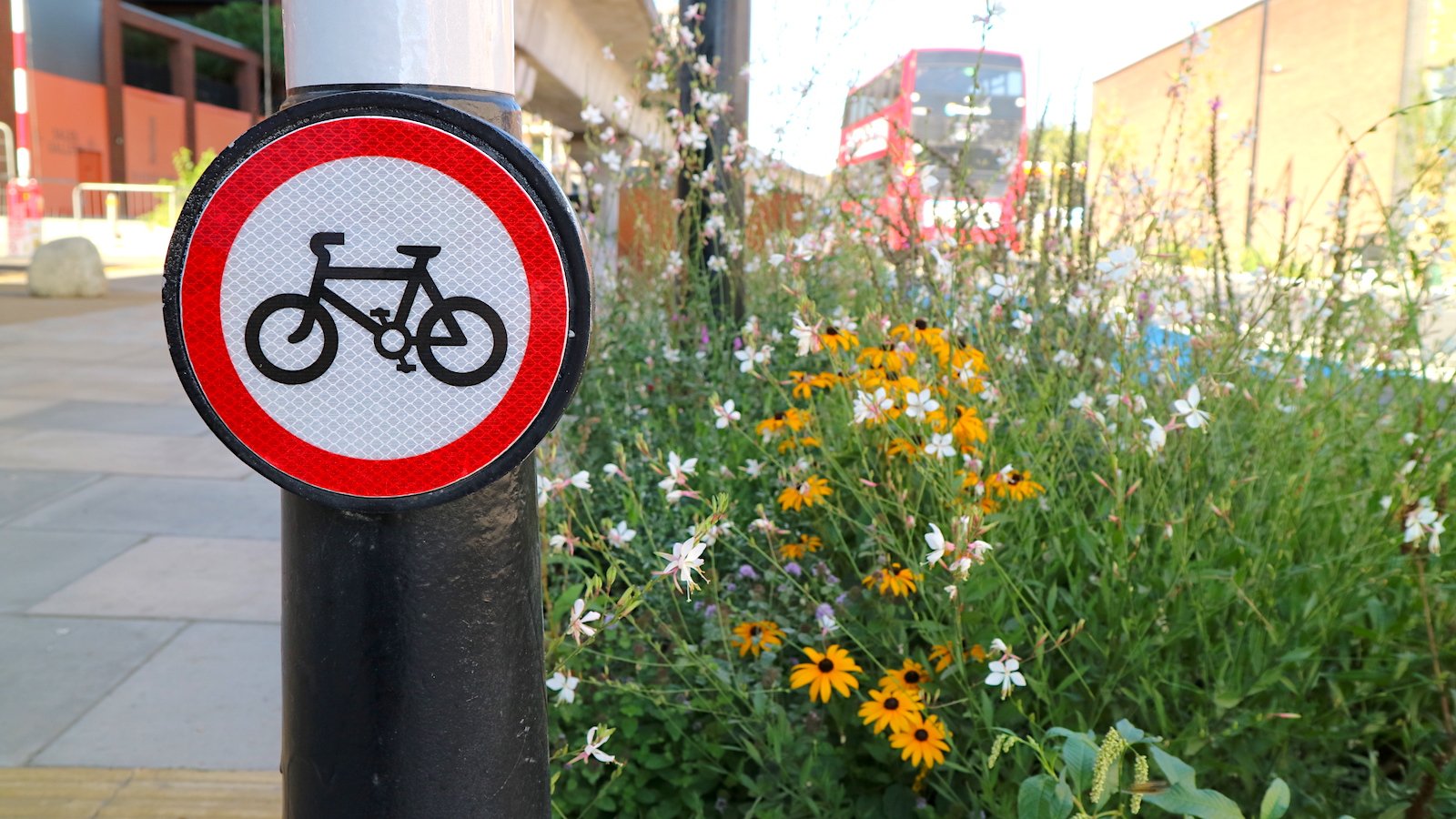
The overarching goals encompass several aspects:
Improving Local Air Quality: By strategically incorporating green spaces and vegetation, the project aims to mitigate air pollution, making the area not just visually appealing but also healthier for residents and visitors.
Creating Safe and Attractive Streets: The Royal Docks Rain Gardens project prioritises safety and aesthetics, ensuring that all members of the community can enjoy the streetscapes. Pedestrians and cyclists take precedence, reducing traffic dominance.
Enhanced Accessibility: Improved access and connections to Docklands Light Railway (DLR) train stations are part of the plan. This will make commuting more convenient and promote sustainable modes of transportation.
These objectives align closely with the Mayor of London's Transport Strategy and Transport for London's (TfL) Healthy Streets outcomes, reflecting a commitment to sustainable, people-centric urban planning. The Royal Docks Corridor project represents a visionary approach to urban development, emphasising not only the functional aspects of transportation but also the essential quality of life factors that contribute to the well-being of the community.
Welcome to our virtual tour of the magnificent Royal Docks Rain Gardens! 🌿✨
Frequently Asked Questions
What are Sustainable Drainage Systems (SuDS)?
Sustainable Drainage Systems (SuDS) are innovative approaches to managing surface water runoff in urban areas while minimising the impact on the environment. The primary goal of SuDS is to mimic natural drainage processes, thereby reducing the risk of flooding, improving water quality, and promoting sustainability. SuDS encompass a variety of techniques and features designed to manage rainwater as close to its source as possible.
SuDS can include elements such as permeable pavements, green roofs, swales, ponds, and, as highlighted in the Royal Docks Rain Garden project, Rain Gardens. These systems allow rainwater to infiltrate the soil, be stored temporarily, or slowly release it into watercourses, replicating the natural water cycle. By doing so, SuDS help prevent surface water flooding, mitigate erosion, and remove pollutants from runoff before it enters rivers and streams.
How do rain gardens help with flood management?
Rain gardens are a specific component of SuDS and play a crucial role in flood management within urban areas. These gardens are designed with a concave shape and contain a mix of deep-rooted, native vegetation and well-draining soil. When rainfall occurs, the rain garden collects and absorbs the excess water.
Rain gardens assist with flood management in several ways:
Absorption: The plants and soil in rain gardens absorb and store rainwater, reducing the volume of water that flows into stormwater drains and, ultimately, watercourses.
Filtration: As water percolates through the soil, it undergoes natural filtration, removing pollutants and impurities, which contributes to improved water quality.
Slow Release: Rain gardens release water slowly into the surrounding environment, reducing the risk of flash flooding and downstream flooding events.
By reducing the burden on traditional drainage systems and mimicking natural processes, rain gardens are a sustainable and effective means of flood management in urban areas.
What is biophilic design, and how does it benefit urban spaces?
Biophilic design is an architectural and urban planning approach that seeks to incorporate nature and natural elements into the built environment. This design philosophy recognises the innate human connection to nature and aims to enhance well-being by bringing elements of the natural world into urban spaces.
Biophilic design benefits urban spaces in several ways:
Improved Well-being: Exposure to natural elements, such as greenery, natural light, and water features, has been linked to reduced stress, increased creativity, and improved mental health for urban residents.
Enhanced Aesthetics: Incorporating natural elements adds visual appeal to urban areas, making them more inviting and attractive.
Increased Sustainability: Biophilic design often includes sustainable features, such as green roofs and living walls, which contribute to energy efficiency, reduce urban heat island effects, and improve air quality.
Biodiversity Support: By providing habitats for plants and wildlife, biophilic design can contribute to urban biodiversity, promoting ecological balance.
How does the Royal Docks Rain Gardens project contribute to biodiversity?
The Royal Docks Rain Garden project significantly contributes to biodiversity through its strategic use of diverse plant species and the creation of rain gardens. Biodiversity refers to the variety of plant and animal species in an ecosystem, and the project positively impacts biodiversity in the following ways:
Diverse Plant Selection: The project incorporates over 50 different varieties of trees, shrubs, and plants, creating a mosaic of habitats that attract various species. This diversity provides food and shelter for insects, birds, and other wildlife.
Rain Garden Ecosystem: Rain gardens, with their native vegetation and moisture-rich environments, support a range of pollinators and other beneficial insects. These gardens become mini-ecosystems that contribute to local biodiversity.
Promotion of Pollinators: As the plants in the rain gardens establish and bloom, they serve as essential food sources for pollinators like bees and butterflies. This helps in the conservation of pollinator populations, which are critical for ecosystem health.
Urban Wildlife Habitat: By introducing greenery and planting, the Royal Docks Rain Garden project creates pockets of urban habitat,


